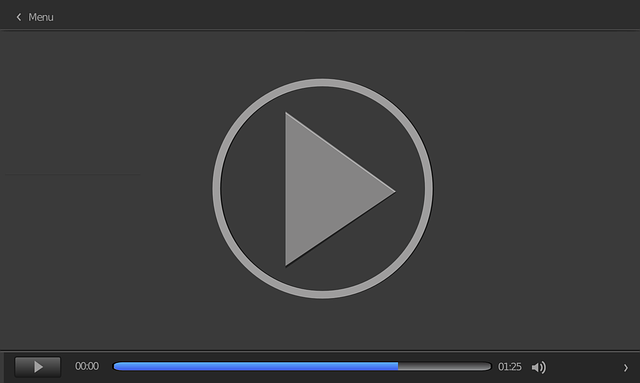Video compression optimizes file sizes for better streaming and sharing experiences. Lossless methods preserve quality but are larger, while lossy techniques reduce size by sacrificing detail. The DivX Codec is efficient for Chrome OS devices, ensuring high-quality playback when used with compatible media players. Balancing video quality and size involves adjusting bitrate, resolution, and encoding methods. Tools like HandBrake, FFmpeg, or VLC offer advanced features for seamless DivX playback on Chrome OS, allowing users to enjoy high-quality media without compatibility issues. Testing and refining settings ensure optimal viewing experiences across devices.
Looking to compress videos without compromising quality? This guide is your roadmap. We explore powerful tools like DivX Codec, ideal for Chrome OS, to ensure smooth video playback. Learn about essential compression settings and software options tailored for Chrome OS. Discover tips for maintaining peak video quality during the process. By following these steps, you’ll master compressing videos efficiently, making it easy to play DivX on your Chrome OS device.
Understanding Video Compression: The Basics

Video compression is a process that reduces the file size of a video while attempting to preserve its original quality as much as possible. This is crucial, especially when sharing or streaming videos online, as smaller file sizes mean faster loading times and less bandwidth usage. There are two primary types of video compression: lossless and lossy.
Lossless compression techniques create smaller files by eliminating redundant data without any perceptible quality loss. This method is ideal for scenarios where preserving every detail is essential, such as in professional video editing or when creating a backup. In contrast, lossy compression accepts some level of data loss to achieve significantly larger reductions in file size. DivX, a popular video codec, employs lossy compression algorithms, making it efficient for general-purpose video sharing and playback, including on Chrome OS where playing DivX videos is straightforward thanks to compatible media players.
DivX Codec: A Powerful Tool for Chrome OS

The DivX Codec is a powerful tool for those looking to compress videos without compromising quality, particularly on Chrome OS devices. Its efficiency in handling video compression makes it an ideal choice for users who want to enjoy their media collections seamlessly while keeping file sizes manageable. By utilizing this codec, you can easily play DivX files on Chrome OS without encountering compatibility issues.
To take advantage of DivX on your Chrome OS device, you’ll need to ensure that your media player supports the codec. Many modern players do, but older ones may require additional settings or plugins. How to Play DivX on Chrome OS involves a straightforward process—just install a compatible media player, import your DivX video, and play it back. This simple step ensures that you can access and enjoy your video content without any hiccups, leveraging the capabilities of the DivX Codec to maintain video integrity during compression.
Selecting the Right Compression Settings

Selecting the right compression settings is key to maintaining video integrity while achieving file size reduction. When compressing a video, you’re essentially removing unnecessary data while preserving the essential elements that make up the visual and auditory experience. The art lies in finding the perfect balance. Higher compression rates result in smaller file sizes but may introduce artifacts or reduce overall quality, which is especially noticeable in high-resolution videos.
For optimal results, consider adjusting bitrate, resolution, and encoding methods. A higher bitrate generally ensures better quality but larger files. Lowering the bitrate will make the video smaller but might also lead to visual or audio compromises. Resolution plays a crucial role; reducing it can significantly compress the file size without much loss in perceived quality for many viewers. Experimenting with different settings on your video editing software and playing back on devices like Chrome OS equipped with DivX support, will help you find the sweet spot that delivers the desired balance between file size and integrity.
Maintaining Video Quality During Compression

Maintaining video quality during compression is a delicate balance, but it’s achievable with the right tools and techniques. When compressing videos, the goal isn’t just to reduce file size but to preserve the original image integrity as much as possible. This is where advanced codecs like DivX come into play. They utilize sophisticated algorithms to eliminate unnecessary data without impacting visual clarity or audio fidelity.
For users on Chrome OS looking to play DivX files seamlessly, integrating these compressed videos into your system is straightforward. Many modern browsers support DivX playback natively, eliminating the need for additional plugins. Simply ensure your browser is up-to-date and the video file is properly encoded in DivX format, allowing you to enjoy high-quality media without any compatibility issues.
Choosing the Best Software for Chrome OS

When it comes to compressing videos for Chrome OS, choosing the right software is paramount. For those seeking to maintain video integrity while optimizing file size, options like HandBrake or FFmpeg stand out as powerful and versatile choices. These tools offer advanced encoding features that preserve detailed visuals and audio quality, ensuring your DivX videos play seamlessly on your Chrome OS device.
For a more user-friendly approach, VLC Media Player is an excellent alternative. Not only does it support a wide range of video formats, including DivX, but its built-in encoder options allow for straightforward compression without sacrificing quality. Whether you’re a tech novice or seasoned encoder, VLC provides an accessible platform to master How to Play DivX on Chrome OS efficiently.
Testing and Optimizing Your Compressed Videos

After compressing your video, it’s crucial to test its integrity and playback quality. One effective way to do this is by playing the compressed file on various devices and platforms, including Chrome OS, to ensure compatibility. How to Play DivX on Chrome OS can be a relevant guide for users who want to check if their optimized videos still play smoothly without any issues.
During testing, pay close attention to details like frame rate, resolution, audio sync, and overall visual clarity. Tools like media players with advanced settings or dedicated video analysis software can help you assess these aspects accurately. If you encounter problems, consider adjusting compression settings further, experimenting with different codecs, or employing more sophisticated techniques to optimize your videos without compromising integrity.
Video compression is a delicate art, but with the right tools and knowledge, you can dramatically reduce file sizes without noticeable quality loss. As demonstrated, utilizing DivX Codec on Chrome OS offers an efficient and effective solution for compressing videos while preserving their integrity. By understanding the fundamentals of video compression and selecting appropriate settings, you can achieve optimal results. So, whether you’re a content creator or simply looking to play DivX files seamlessly on your Chrome OS device, following these steps will ensure you maintain high-quality visuals without the bulk.
